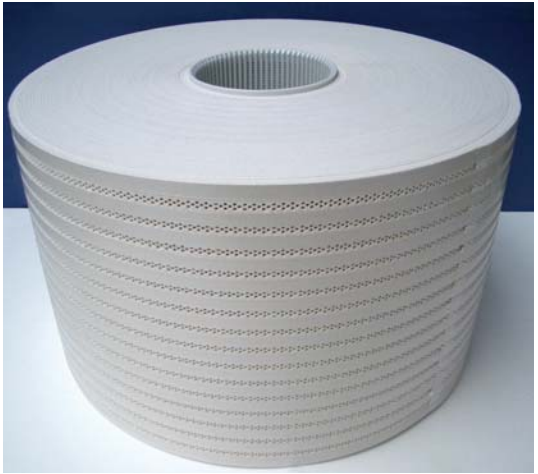Distillers Improve Quality While Reducing Operating Costs with SUPRApak™ Technology
Overview
Filtration of spirits can be a challenging task. It is essential to remove contaminants that may cause turbidity while retaining the quality enhancing components in the product. Filter sheets are the traditional method for achieving this delicate balance. Sheets are comprised of a unique matrix of materials that provide an excellent combination of adsorption and depth filtration, making them an ideal solution for turbidity reduction and haze removal in spirits. Filter sheets are available in multiple grades to cover a wide range of applications from filtration of cordials to chill haze reduction in brown spirits to particle removal in white spirits. Additionally many plate and frame filter units have the flexibility to add or remove sheets to suit the batch size, flow rate or the specific product to be filtered.
While effective, filter sheets in a plate and frame assembly do have disadvantages. With multiple flat sheets configured in parallel, installation and assembly is labor intensive and with sealing dependant on the operator and equipment maintenance, edge leakage is common resulting in product loss and unsanitary conditions. Additionally, the installation is an open system resulting in alcohol exposure to the surrounding environment. In many regions a ventilation system is required to minimize the release of volatile organic compounds.
The Challenge
In recent years, with mergers and acquisitions and globalization of brands, distilleries are under increasing pressure to improve quality and reduce costs while satisfying more stringent regulatory requirements. They require filtration techniques that are easy to use and require less labor and maintenance while providing similar filtration characteristics and flexibility as sheet filters. Additionally with aging equipment and expansion projects on the rise, new equipment must address limited floor space availability. Finally, documentation or certification of the filtration equipment is critical to ensure compliance to local regulations and HACCP programs.
The Solution
To overcome some of the drawbacks associated with traditional sheet filters, Pall developed SUPRApak technology. SUPRApak modules are constructed using the same depth filter media as the classical filter sheets, however, the media is configured into a modular format that fits easily into an enclosed housing for safe, simple and hygienic operation. Unlike typical lenticular modules, SUPRApak modules have an entirely different design and flow configuration that maximizes the surface, depth and adsorption mechanisms of filtration that normally occur in sheet media.
A module consists of filter sheet material wrapped around a central permeable core with external straps that attach the sheet material to the core. The sheet material is punched with an intricate pattern of feed and filtrate channels, which direct the fluid flow through the module. The unfiltered fluid enters the module from the outside through feed channels. The driving force of differential pressure pushes the fluid flow through the sheet media in a direction parallel to the filter sheet surface toward the filtrate channels. The filtrate channels then carry the fluid toward the center core where it exits the module.
Application Bulletin SUPRApak’s unique flow configuration typically results in higher throughput performance and improved filtrate quality when compared to flat sheets in a plate and frame format. A whisky distillery was recently having problems with high chill haze resulting in the need to double sheet filter each batch. With SUPRApak technology, the customer was able to meet the requirements with a single filtration pass. As a result they significantly reduced their annual filter spend by 27% and cut their batch time from 16 hours to 8 hours.
When combined with a 75% reduction in labor for blow down and change-out and the elimination of drip losses, the housing payback was a short 6 months. Moreover, by reducing the batch time they now have the capability to increase their total capacity. The high packing density and modular design of the SUPRApak modules allow for extremely high surface area in a compact footprint. Up to six modules can be stacked together in a single housing for up to 85% reduction in space when compared to the horizontal chassis design of most flat sheet filter assemblies.
Additionally, with minimal components and replacement parts, when comparing equal filter area, the simple SUPRApak housing set up carries a significantly lower initial investment cost. For example, a tequila packager using 2 SUPRApak housings to meet their flow requirements, was able to reduce their capital spend by 60% compared to their budget for a new plate and frame unit. In addition to the drip loss savings and reduced release of volatile organic compounds, they will now also have extra floor space for future expansion.
The Benefits
With SUPRApak modules, distilleries can achieve cost effective and quality enhancing filtration for applications from turbidity reduction to chill haze removal. When using these modules to replace traditional flat sheet filters, distillers can realize the following benefits:
- Increased process security due to the enclosed design
- Elimination of drip losses for increased product yield
- Improved filtrate quality when directly compared to flat sheet filtration
- Reduced operating costs with a short return on investment (e.g. 6 months)
- Compact filter design for up to 85% reduced floor space requirement
- Up to 60% reduced capital investment compared to a new plate and frame assembly Up to 75% reduced labor for blow-down and change-out
- Decreased downtime due to the high packing density, unique flow configuration and short change-out times
- Minimal spare parts and maintenance
About Pall Corporation
Pall Corporation is the largest and most diverse filtration, separation, and purification company in the world. Pall serves the food and beverage industries with advanced membrane filtration technology and systems engineered for reliability and cost-effectiveness. Easy to install and simple to use, our systems satisfy a wide range of filtration requirements. Our Total Fluid Management SM (TFM) approach offers customers solutions to address the needs of an entire process, encompassing filtration products, services, systems and training.




